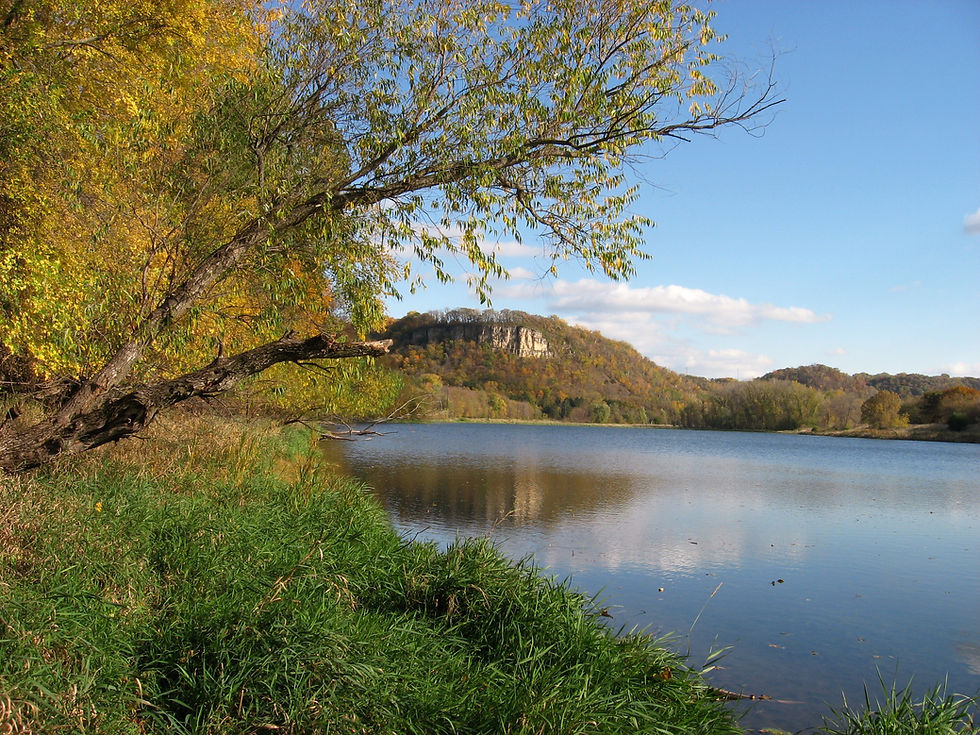August's Colors and More
- Bruce Ause
- Sep 8, 2018
- 2 min read

August Sunset over Wacouta Bay
There was a ten day period in mid-August when numerous air quality health alerts were issues for most of Minnesota due to massive forest fires burning in northwest Canada. An upside of the poor air quality was some pretty spectacular sunsets. We found it interesting as the sun became closer to the horizon, the dense smoke diminished it's brightness.

Orange Sun
At one point in time, there were six large wildfires burning in Alberta and British Columbia. The size of these fires pumped copious amounts of smoke high into the atmosphere and hitching a ride on the jet stream contributing to a brilliant orange sun.

Robin and Mountain Ash Berries
We have a mountain ash tree close to the back of our home and easily observable. Every year at this time as the berries ripen and turn orange, there is a frantic competition between robins and cedar waxwings to discover and take advantage of this abundant food supply. Robins won the race this year and devoured all berries in a matter of a few hours. These berries contain tannin making them poisonous to humans.

Turk's-cap Lily
A beautiful August wild flower is the erect-stemmed Turk's-cap Lily. In Minnesota, it is found primarily at the edge of damp meadows and roadsides. This species of lily is now very uncommon because of our farming of such meadows and intensive management of road ditches. This lily was one of only three specimens I discovered growing in a remote area in Wacouta a couple weeks ago.

Jack-in-the-Pulpit Berries
As we get into late summer, the cluster of berries on the Jack-in-the-pulpit wild flower ripen to bright orange. These plants are perennials and grow from a white corm which appears like an onion. These corms can live up to 100 years. Native Americans would thinly slice and dry these corms to be used as a spice when cooking meat such as venison.

Elderberries
A colorful and edible late summer berry is that of the American Elderberry. This native deciduous shrub has white flowers in early summer commonly used for tea. The dark purple berries are a popular fruit in preparing syrup, jam, jelly and wine. These berries are also mixed with apples to make pies or sauce.

Wild Cucumber in Bloom
The past couple weeks I have fielded several questions regarding the patches of dense white flowered vines draped over roadside trees and shrubs. This late summer vegetation is easy to observe even while travelling at 60 mph. These native wild cucumber vines appear to smother everything it covers, but rarely does much damage.

Wild Cucumber Fruit
These pod-like fruits are only two inches long and are covered with spines.

Blooming Goldenrod
As the vibrant colors of a variety of prairie wild flowers begin to diminish along the Rattlesnake Bluff trail, bright yellow goldenrod steps up to fill the void. There are several species of goldenrod, but the most common one along the trail is Canada Goldenrod (Solidago canadensis). There is a misconception that goldenrod is responsible for causing hay fever. The pollen from this plant is very sticky and is transported primarily by insects. Ragweed has a very inconspicuous bloom right now and is the main culprit for allergy sufferers in late summer and early fall.




Comments